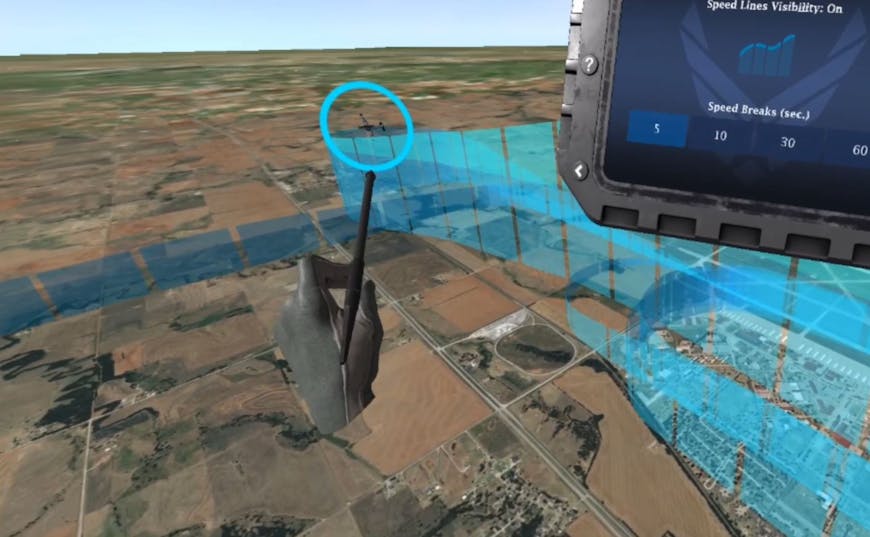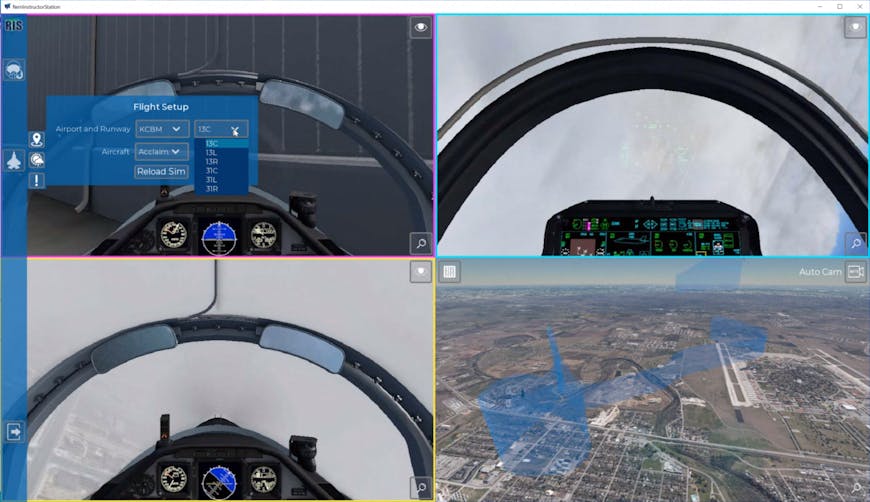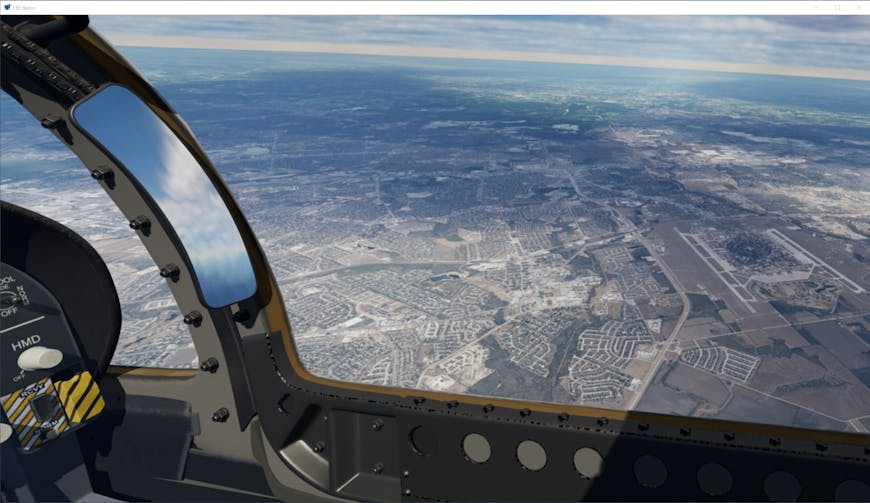Vertex Solutions Delivers Flight Training in Any Location and in Limited Bandwidth with Cesium for Unreal and Cesium ion
To meet defense and national security needs, Vertex Solutions builds XR flight simulators and apps with Cesium for Unreal and Cesium ion to ensure competence and increase performance for undergraduate pilots.
Vertex Solutions’ 200+ flight simulators for the PTT program access Cesium World Terrain and Bing Maps Aerial imagery in Cesium ion. Courtesy Vertex Solutions.
The Pilot Training Transformation (PTT) program is designed to get new military pilots up to speed efficiently, with widespread access to modern, high-fidelity XR training. PTT is collaboratively managed by the US Air Force (USAF) Air Education and Training Command (AETC), 19 AF, and the interservice Defense Innovation Unit (DIU). Vertex Solutions is a woman-owned small business that provides modeling, simulation, and training technology, specializing in XR systems development, courseware development, and support services. Using Vertex’s Immersive Training Devices (ITDs) and Standalone Virtual Reality (SAVR) applications, instruction and learning can occur locally or remotely, focusing on systems, procedures, maneuvers, and line-oriented flight training (LOFT); experiences can be adjusted for students or shared broadly.

A Vertex Solutions’ SAVR app for instruction and learning. Courtesy Vertex Solutions.
Having these immersive 3D experiences prior to physically working with the aircraft increases student performance and decreases the amount of time it takes for a pilot to achieve their first solo flight, according to program data. The PTT program was developed to address the pilot shortage, increase throughput and efficiency, increase access to high-fidelity training, and provide a flexible hardware/software architecture—so preparing undergraduate pilots for many locations and differing terrain and conditions in immersive 3D XR training is vital.

Remote instructor station. Courtesy Vertex Solutions.
Vertex has been using Cesium for Unreal and Cesium ion since 2021 to serve USAF, US Navy, and other instructors and trainees in any location, including those with limited bandwidth, and to ensure terrain fidelity and interoperability across customer platforms. The company uses Cesium World Terrain and Bing Maps Aerial imagery in Cesium ion to support several simulator programs for their customers. These datasets are tiled into 3D Tiles and streamed to Unreal Engine for use on Windows machines and Android devices, enabling pilots to better understand their aircraft and operational environments.

XR flight simulator over Randolph AFB, Texas, using Cesium for Unreal and Cesium ion. Courtesy Vertex Solutions.
“Cesium eases our efforts with seamless cross-platform support, which is especially apparent as we engage in an increased number of Unreal Engine application developments,” said David Hooper, Director of Software Development for Vertex Solutions. “Additionally, the scalability of Cesium’s terrain fidelity and bandwidth allows us to support full simulation systems as well as standalone headset applications. This has expanded the scope and utilization of our training systems and has been well received by our customers.”
Immersive experiences with real-world 3D data prepare USAF pilots quickly and for a variety of scenarios. Learn more about how Cesium supports missions across the globe.